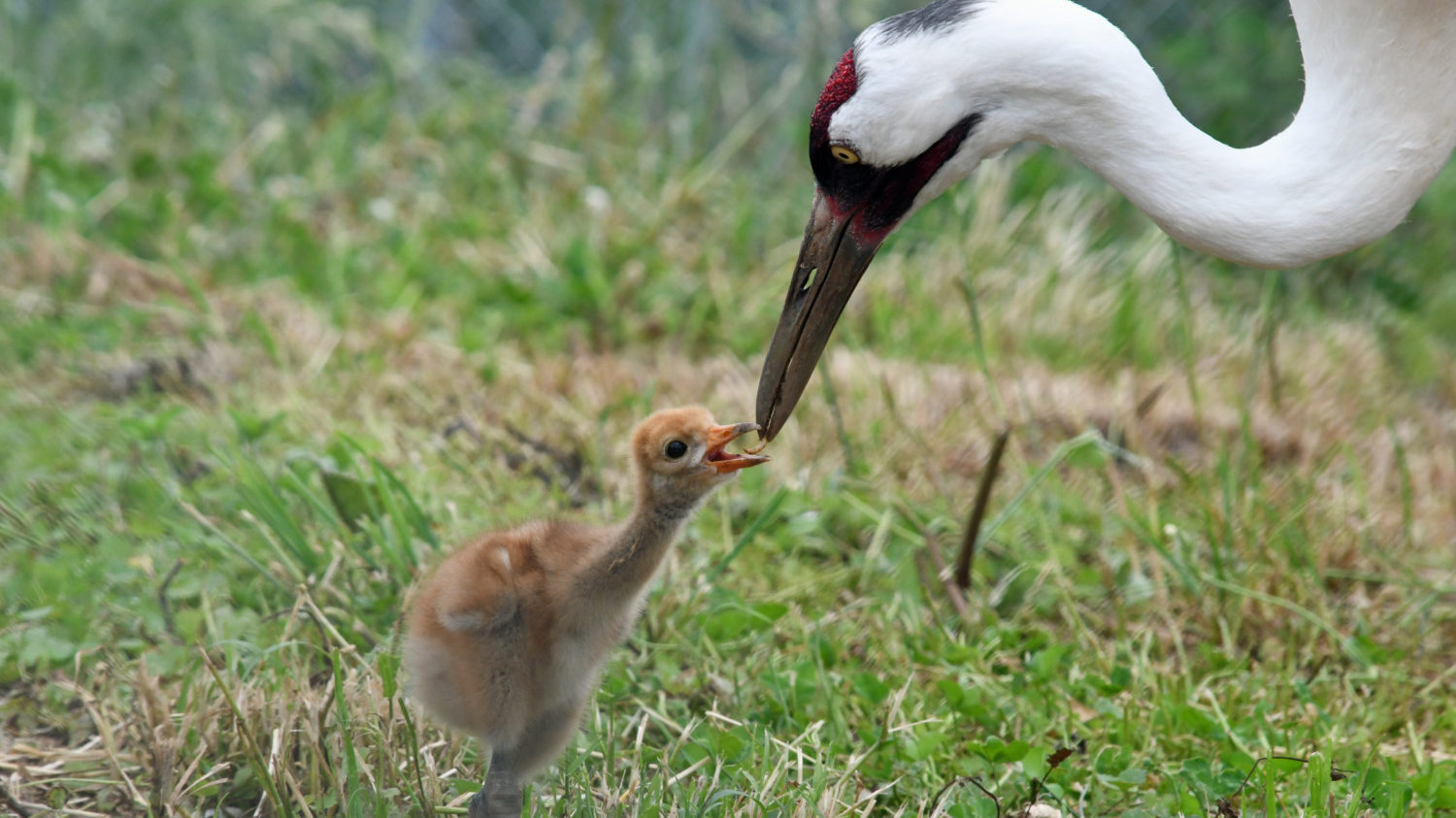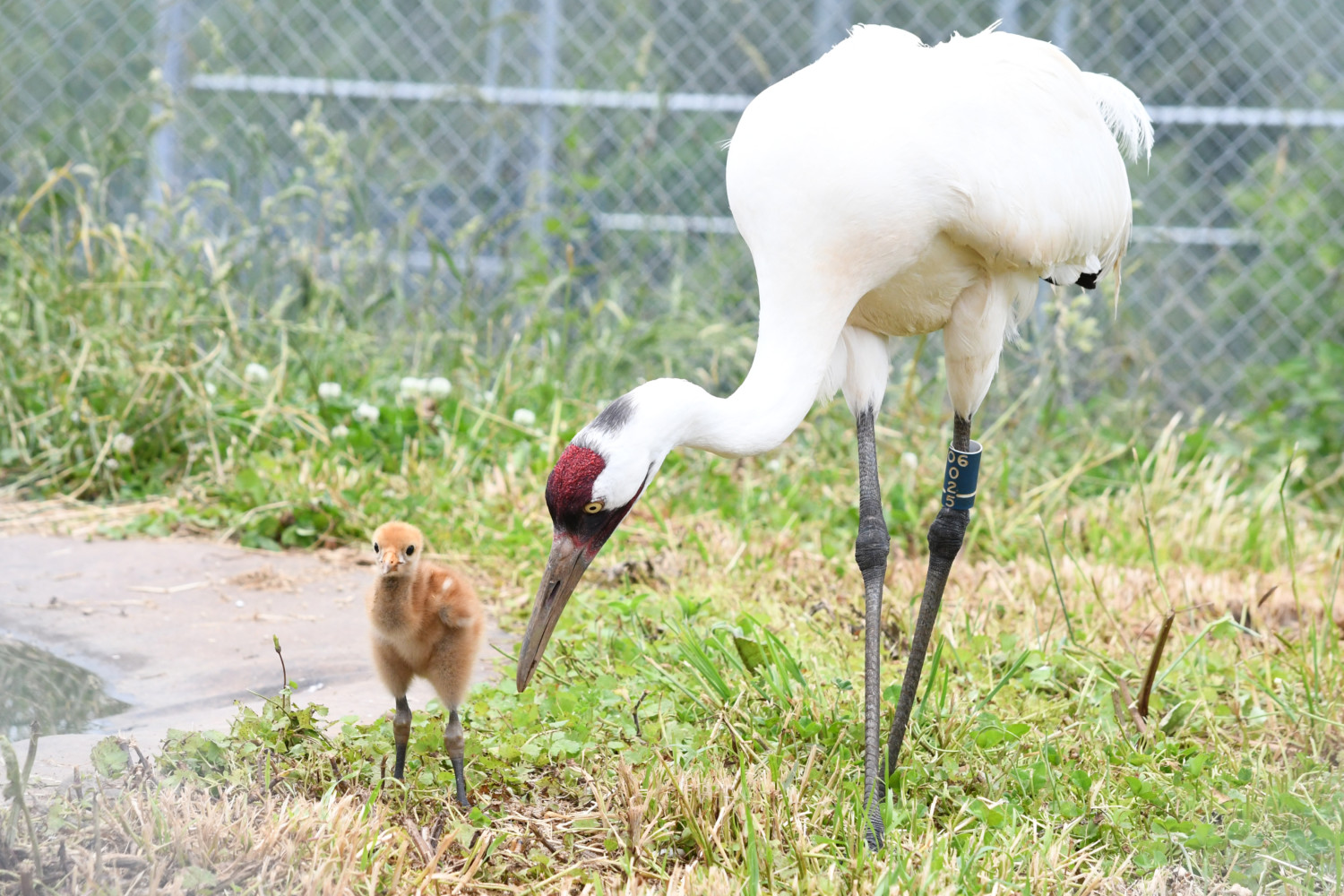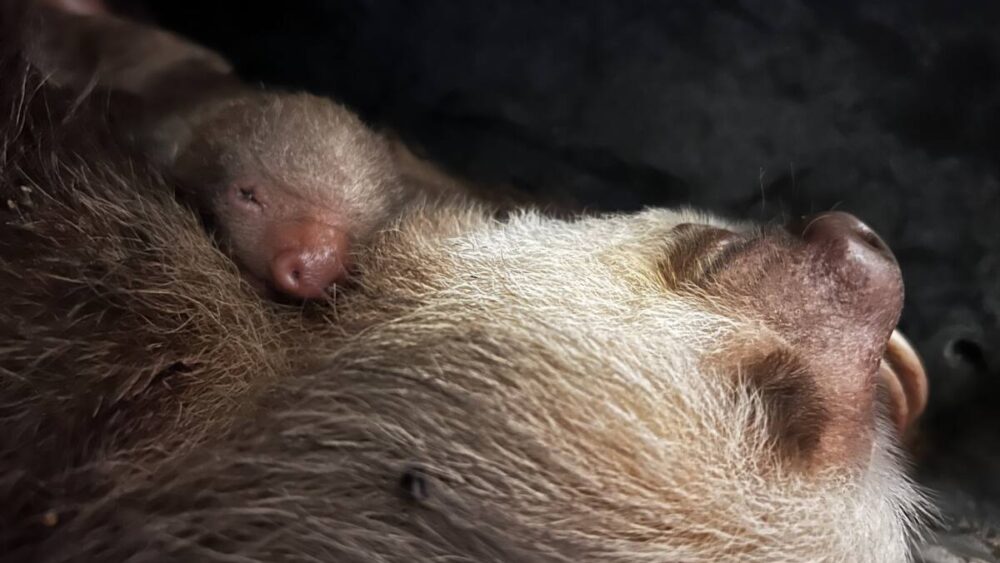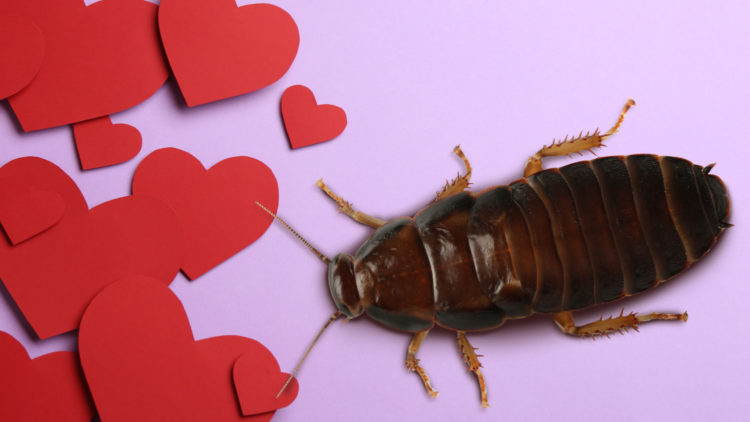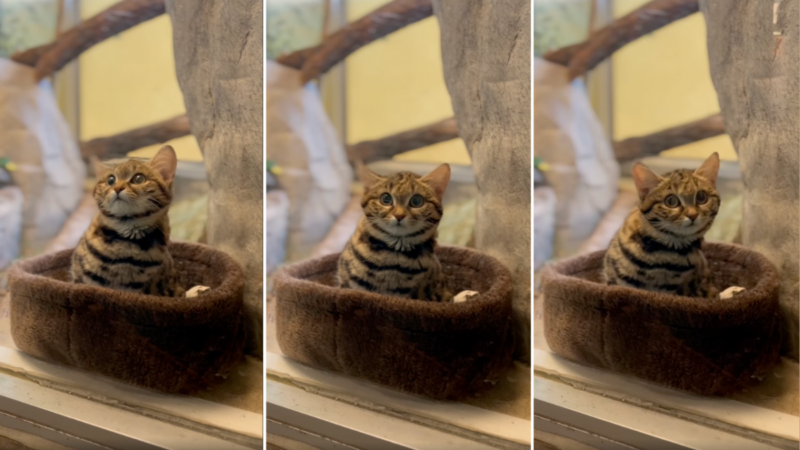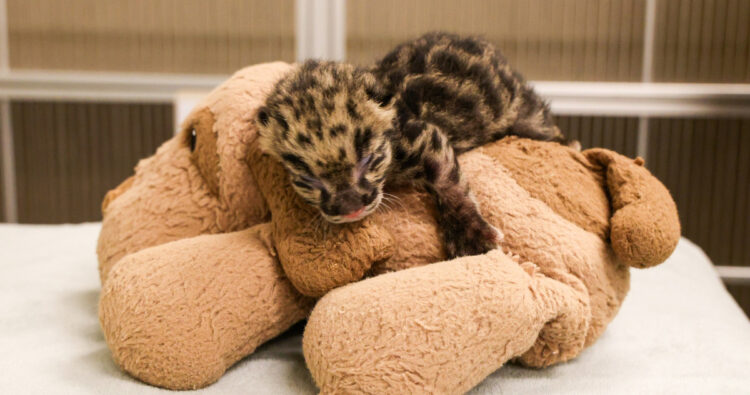Rare baby whooping crane born at National Zoo facility
There is some good news for whooping cranes. The Smithsonian Conservation Biology Institute (SCBI) in Front Royal, Virginia, announced that its first-ever whooping crane baby has hatched. The chick is thriving, which is encouraging as the species is highly endangered.
SCBI, which is part of Smithsonian’s National Zoo and Conservation Biology Institute, shared the news of the chick, which hatched on May 26, on social media.
“Whoop! Whoop! For the first time, a whooping crane—one of the most endangered species of crane in the world —hatched May 26 at the Smithsonian Conservation Biology Institute, and is thriving,” the zoo wrote in a Facebook post showing the baby bird.
The egg went on a long journey before arriving at the Smithsonian facility.
“Our bird team took the then-egg under their wing May 18, after the International Crane Foundation and Necedah National Wildlife Refuge found the egg abandoned in a wild nest in Wisconsin,” wrote the National Zoo in a Twitter post (along with the photo of the adorable chick standing among clovers).
A 16-year-old female named Tehya and a 25-year-old male named Goliath were selected to serve as surrogate parents. The bird team is encouraged by the colt’s growth and report that the adults are protective and attentive to its needs. pic.twitter.com/jZptVe3oA0
— National Zoo (@NationalZoo) June 17, 2022
A second tweet in the series also notes that two adult whooping cranes were selected to serve as the baby’s surrogate parents: a Tehya, a 16-year-old female, and Goliath, a 25-year-old male. The pair had already been caring for two of their own eggs this spring, but both turned out to be infertile. A press release from the institute explained that biologists swapped out the infertile eggs for a fake egg so they’d continue their parenting behaviors. Then, just before the egg from Wisconsin was ready to hatch, they switched it in for the fake egg.
“When the colt hatched, both parents immediately began caring for it,” the statement says. “Keepers and veterinarians are allowing the family to bond without interference.”
Whooping crane chicks are called “colts” because of their long legs and appearance of galloping when they run. Although they fledge between 80 and 100 days old, the colts tend to stay close to their parents’ territories for up to nine months.
Experts estimated that only 22 whooping cranes remained in the wild in 1941. Their near-extinction was caused by many factors — beginning in the 1800s and continuing today — including the destruction of their habitats, hunting and poaching, climate change, natural disasters and oil spills. Thanks to conservation efforts, approximately 700 whooping cranes now live in the wild, and 140 live in human care. According to the U.S. Geological Survey (USGS), all living whooping cranes are descendants of a core flock of only 16 birds.


